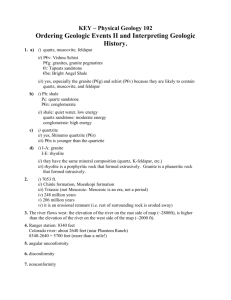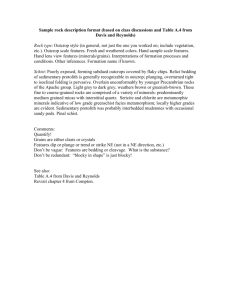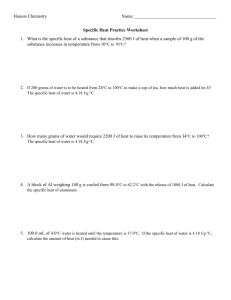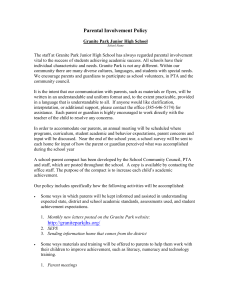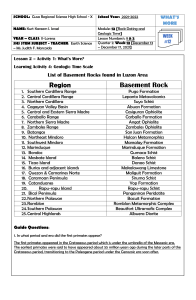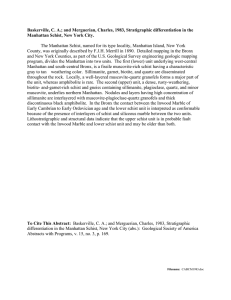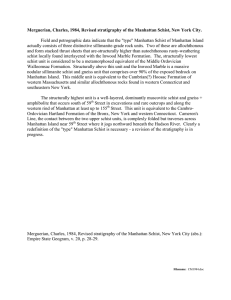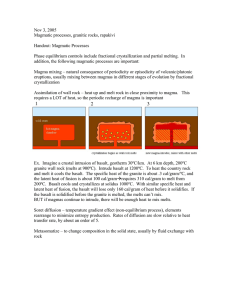GY480 Field Geology Lithologic Description Checklist
advertisement
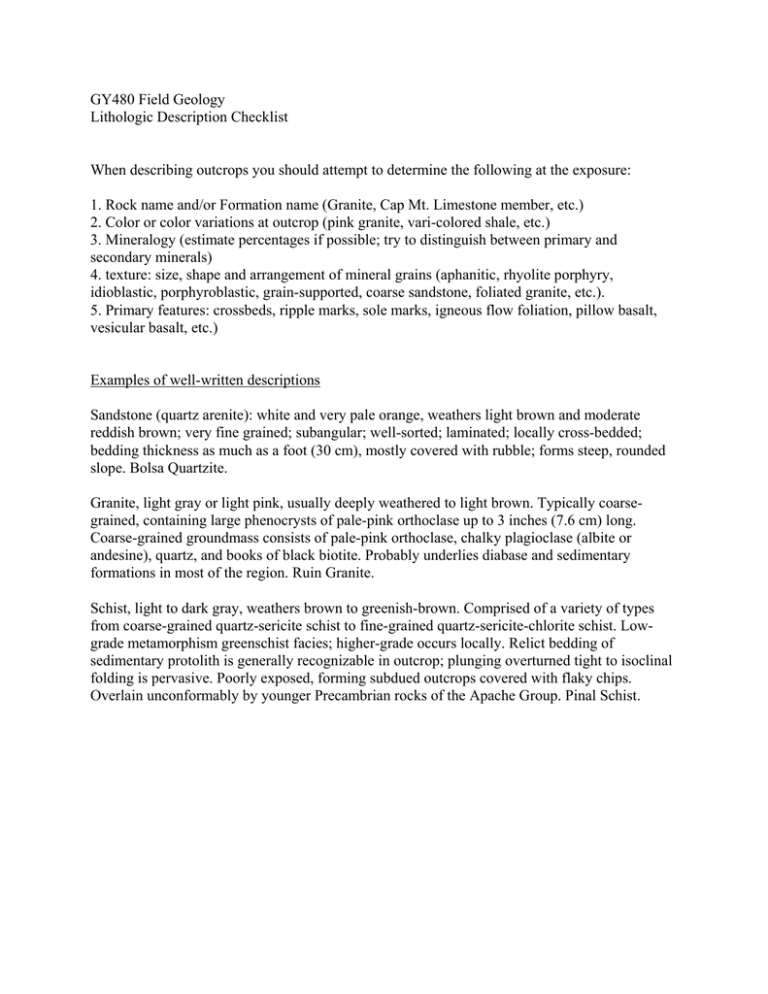
GY480 Field Geology Lithologic Description Checklist When describing outcrops you should attempt to determine the following at the exposure: 1. Rock name and/or Formation name (Granite, Cap Mt. Limestone member, etc.) 2. Color or color variations at outcrop (pink granite, vari-colored shale, etc.) 3. Mineralogy (estimate percentages if possible; try to distinguish between primary and secondary minerals) 4. texture: size, shape and arrangement of mineral grains (aphanitic, rhyolite porphyry, idioblastic, porphyroblastic, grain-supported, coarse sandstone, foliated granite, etc.). 5. Primary features: crossbeds, ripple marks, sole marks, igneous flow foliation, pillow basalt, vesicular basalt, etc.) Examples of well-written descriptions Sandstone (quartz arenite): white and very pale orange, weathers light brown and moderate reddish brown; very fine grained; subangular; well-sorted; laminated; locally cross-bedded; bedding thickness as much as a foot (30 cm), mostly covered with rubble; forms steep, rounded slope. Bolsa Quartzite. Granite, light gray or light pink, usually deeply weathered to light brown. Typically coarsegrained, containing large phenocrysts of pale-pink orthoclase up to 3 inches (7.6 cm) long. Coarse-grained groundmass consists of pale-pink orthoclase, chalky plagioclase (albite or andesine), quartz, and books of black biotite. Probably underlies diabase and sedimentary formations in most of the region. Ruin Granite. Schist, light to dark gray, weathers brown to greenish-brown. Comprised of a variety of types from coarse-grained quartz-sericite schist to fine-grained quartz-sericite-chlorite schist. Lowgrade metamorphism greenschist facies; higher-grade occurs locally. Relict bedding of sedimentary protolith is generally recognizable in outcrop; plunging overturned tight to isoclinal folding is pervasive. Poorly exposed, forming subdued outcrops covered with flaky chips. Overlain unconformably by younger Precambrian rocks of the Apache Group. Pinal Schist.

